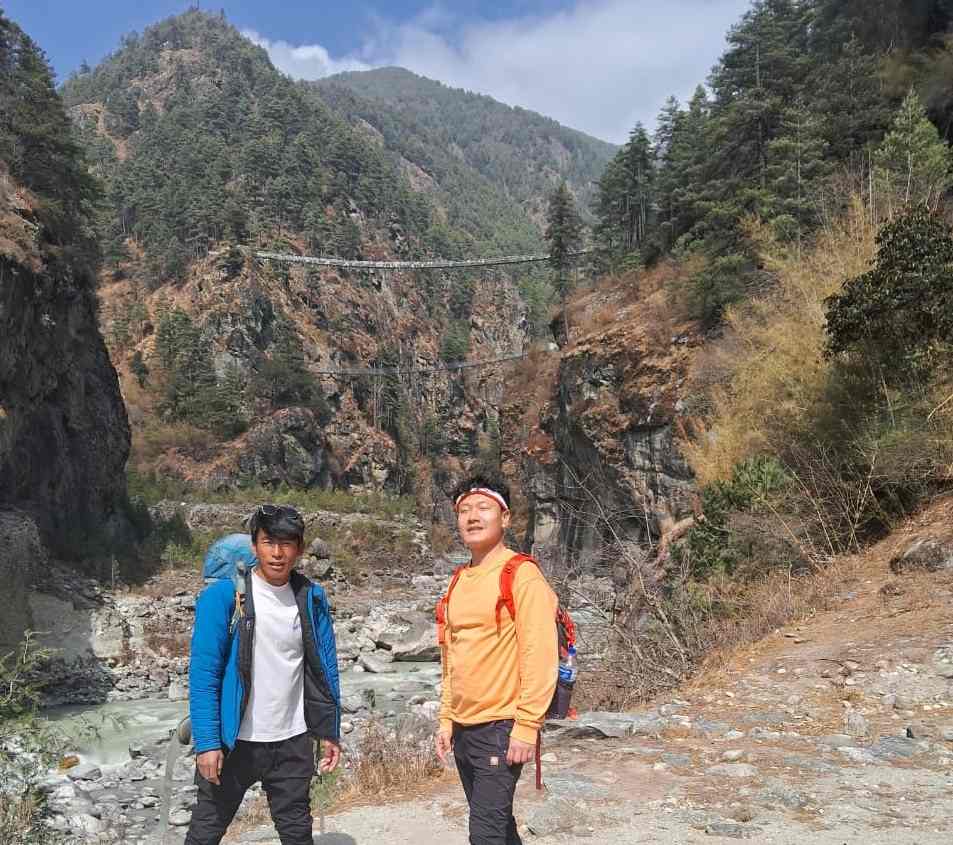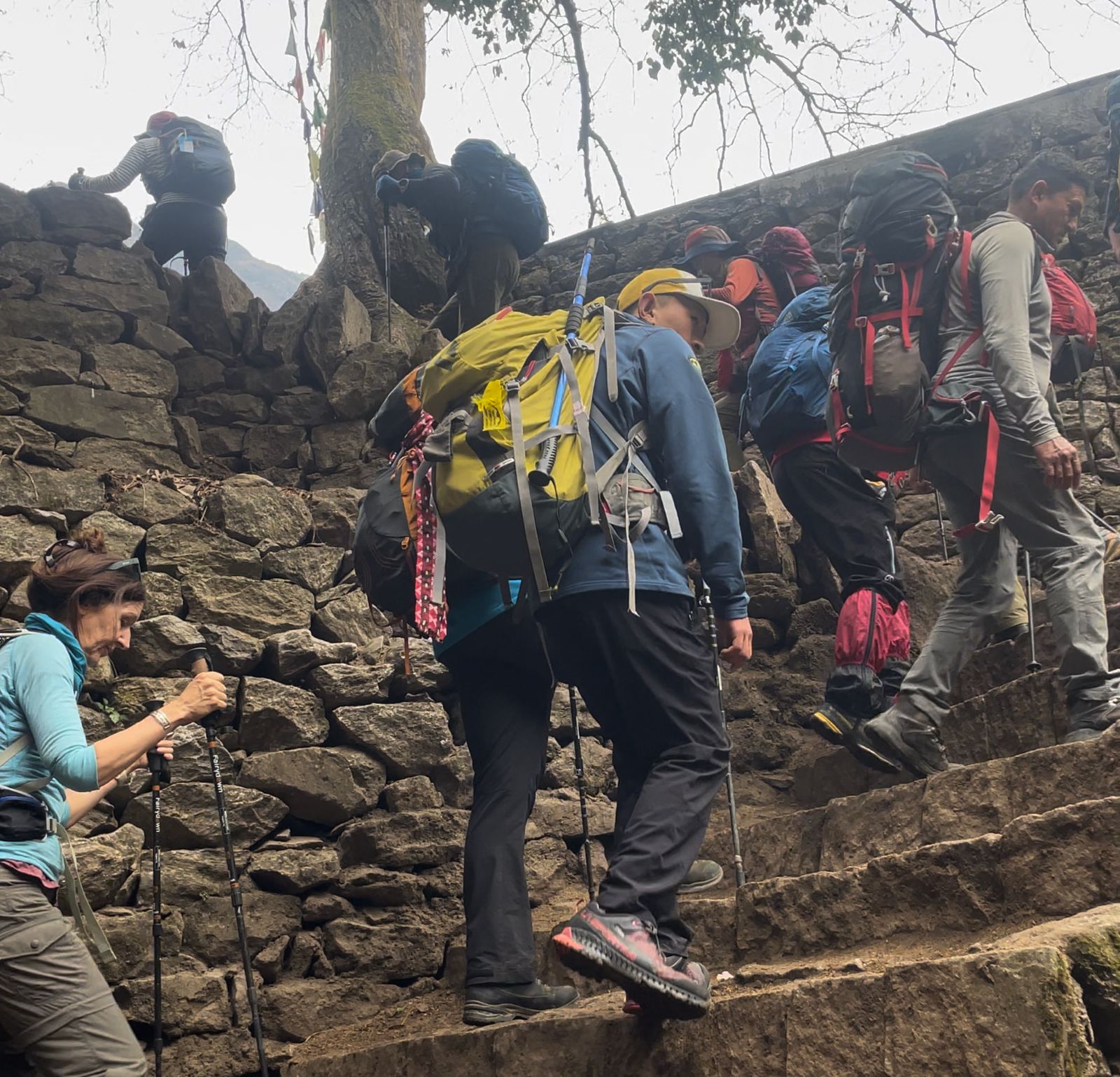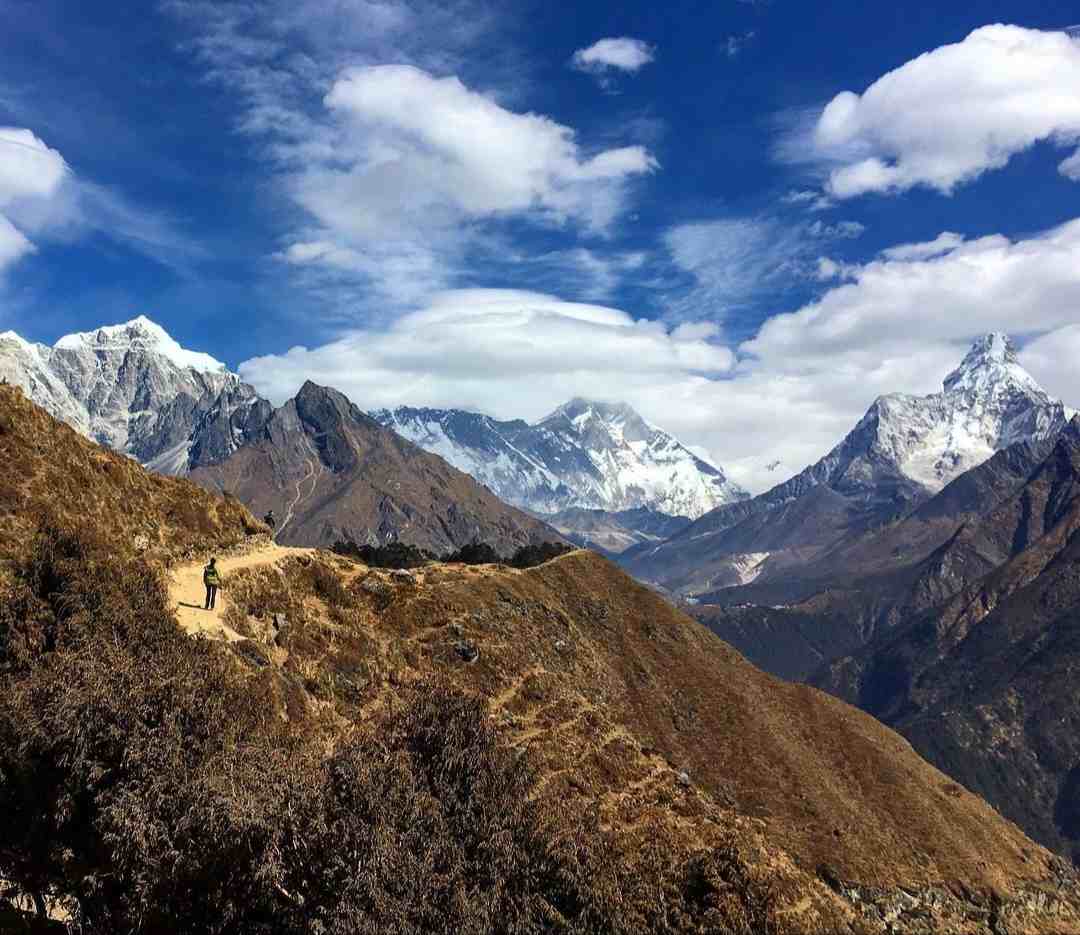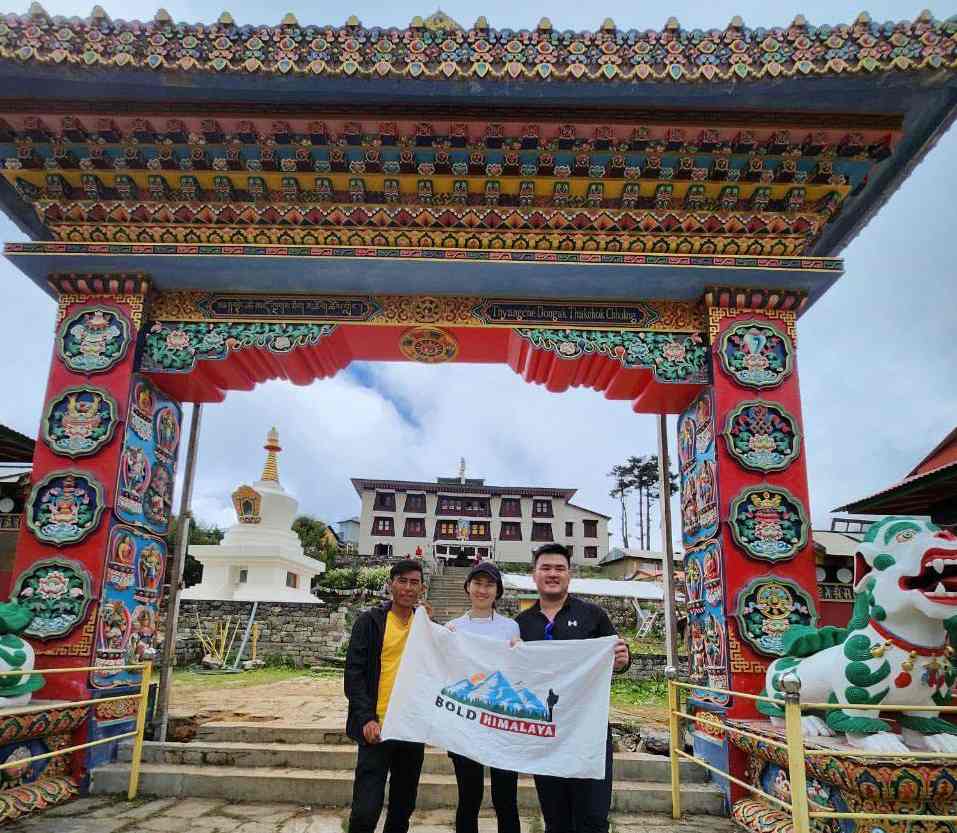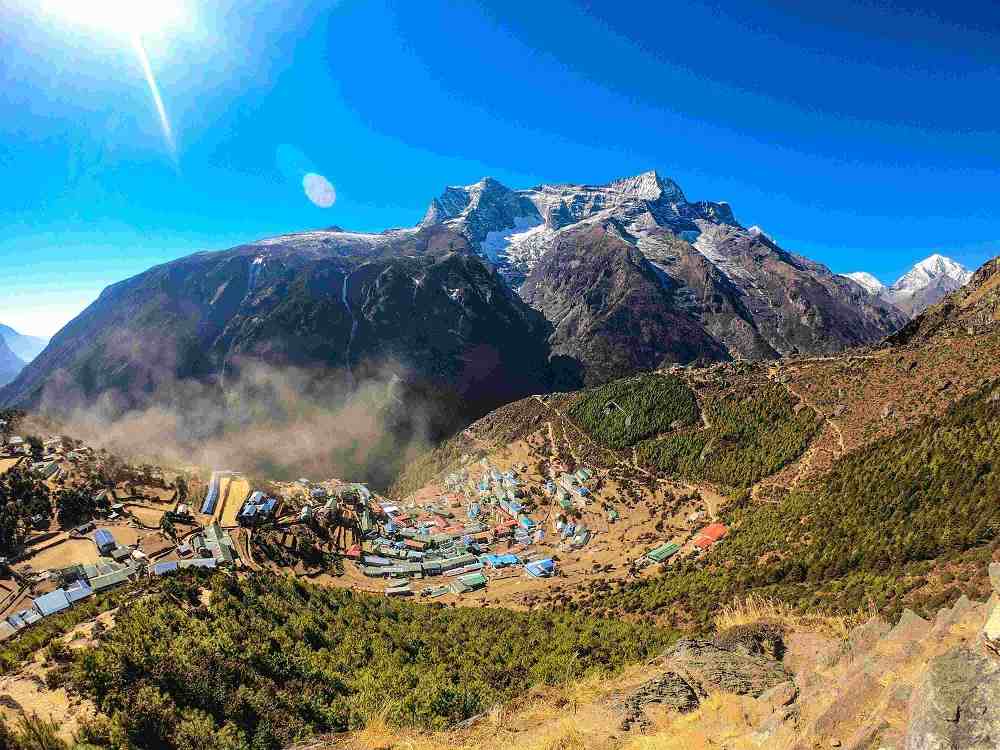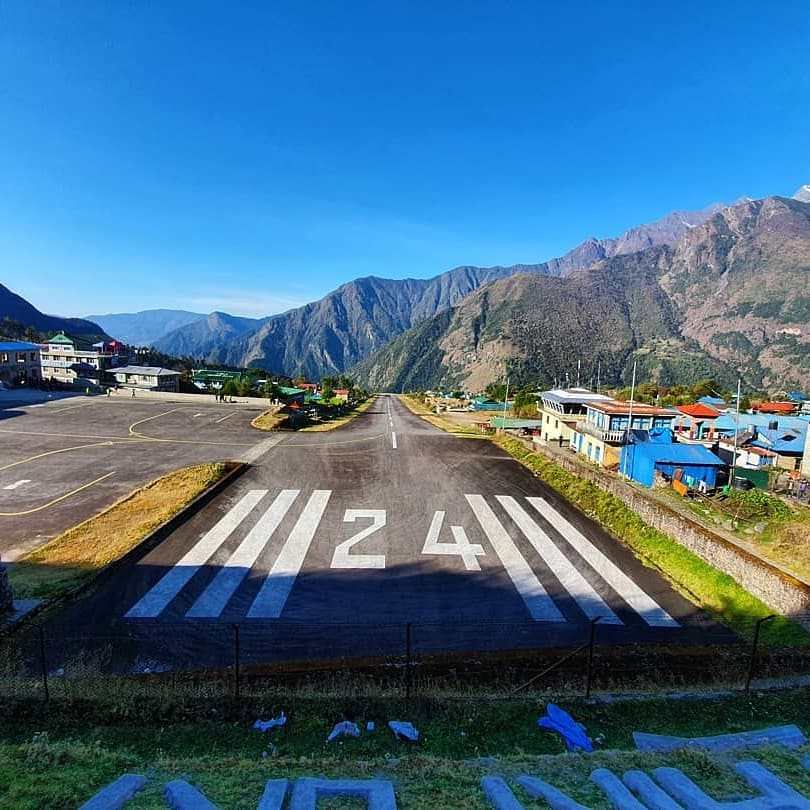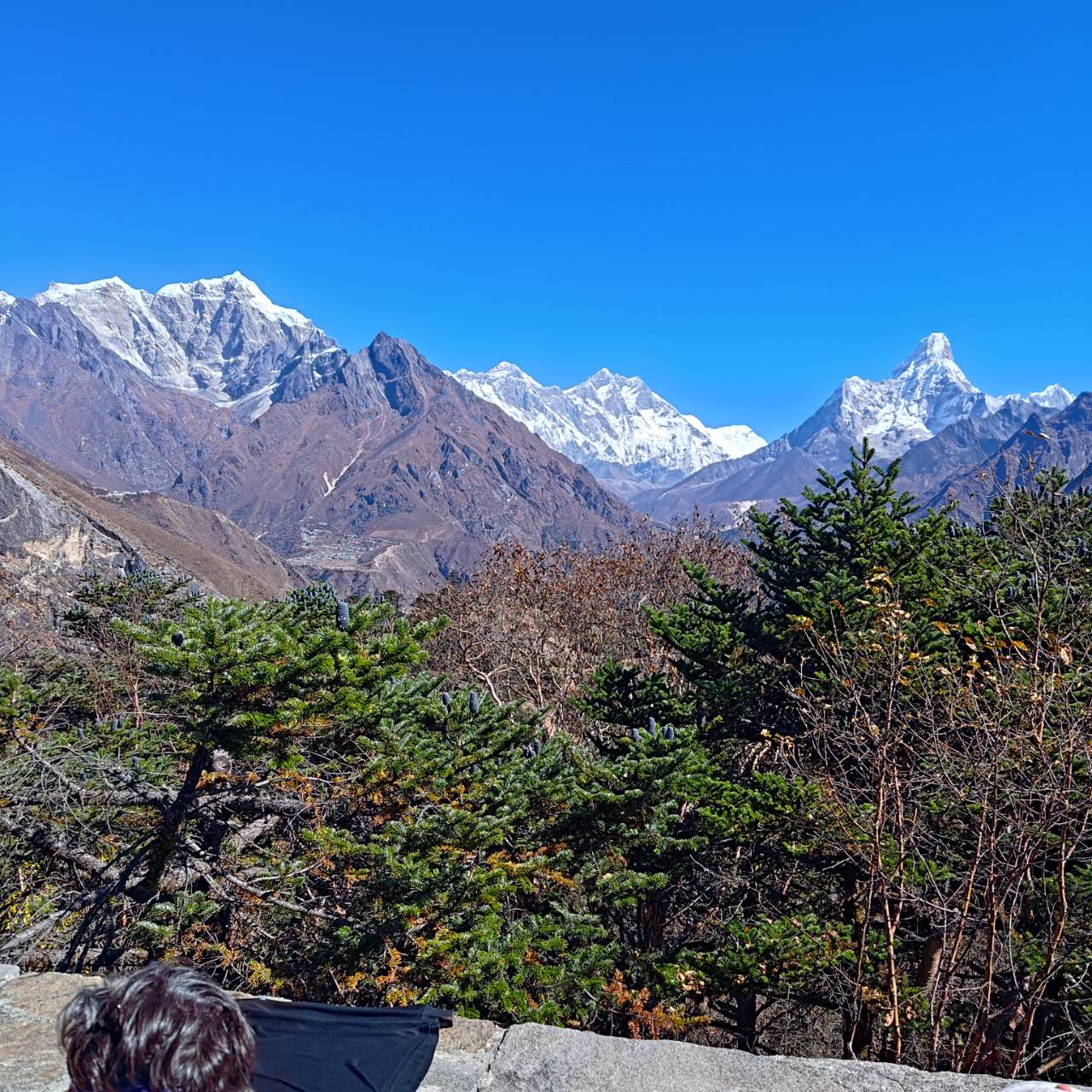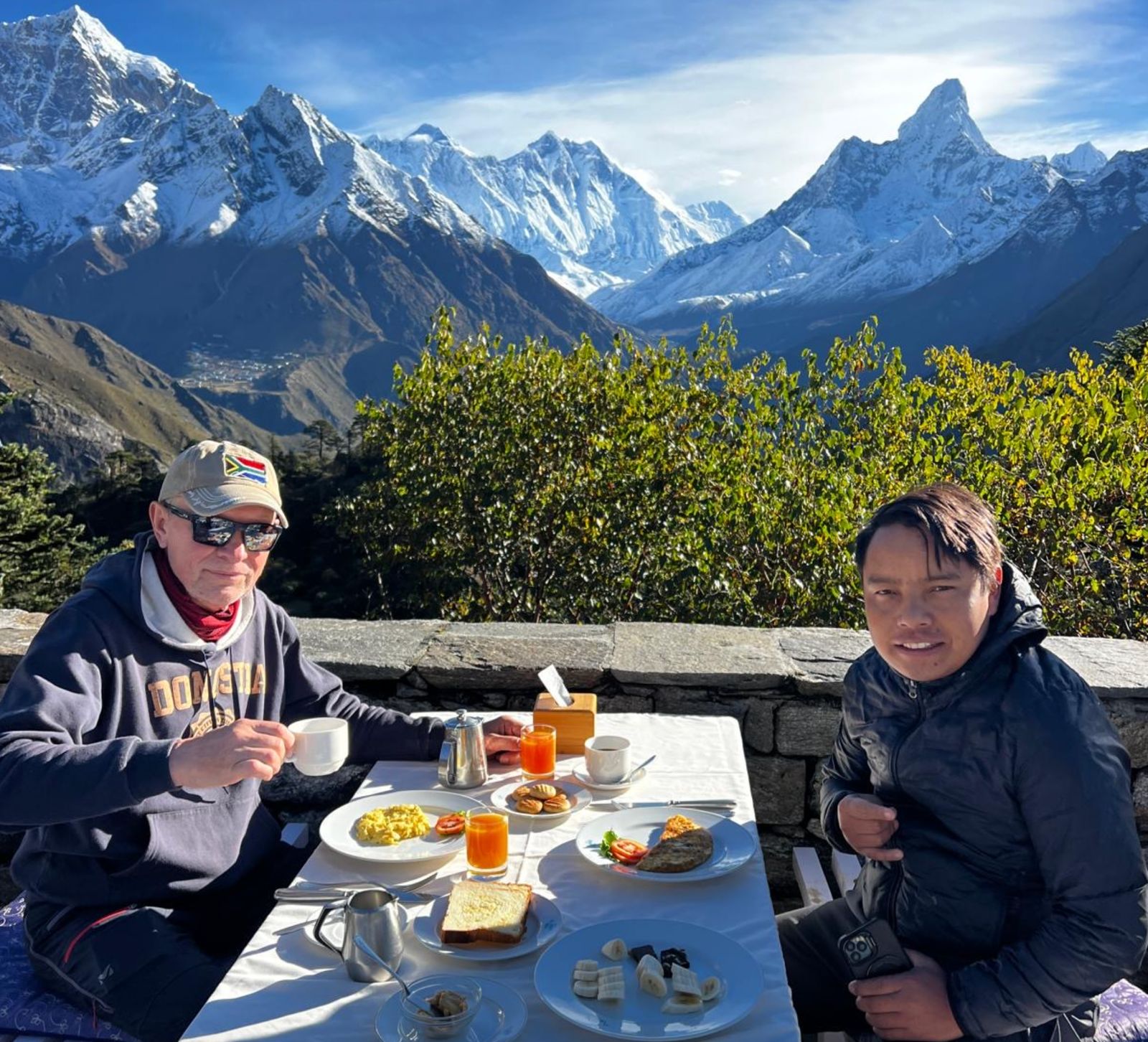See Mt. Everest on Our Short & Scenic 6-Day Trek – Perfect for Beginners & Families
Itinerary
Your Journey, Step by Step
Inclusions
What’s Covered in Your Adventure
- Ground Transportation: Private tourist vehicles for all transfers from the airport to the hotel and back, as per the itinerary.
- Accommodation: Standard trekking lodges along the Everest View Trekking route.
- Meals: Full meals during trekking as outlined in the itinerary (5 breakfasts, 5 lunches, 5 dinners with tea or coffee).
- Permits: Everest National Park Area Trekking permit, Pasang Lhamu Rural Municipality entry permit, and TIMS card (Trekkers' Information Management System).
- Guides: Experienced, licensed trekking guide for up to five trekkers (includes salary, accommodation, meals, and insurance). An additional guide is provided for groups larger than five.
- Snacks: Seasonal fruits, snacks, and nuts.
- Equipment: Essential trekking equipment, including sleeping bag and down jacket (available if needed, to be returned after the trek).
- First-Aid: First-aid medicine items.
- Extras: Duffle bag for trekking, T-shirt, and trip certificate upon completion.
- Taxes and Official Expenses: Government/local taxes and official expenses.
- International Airfare
- Travel Insurance
- Personal Bar Bills
- Tips for Crew Members
Good to Know
Your Journey, Step by Step
Best Time for Everest View Trek
Trekking in the best season offers spectacular views of the scenery of Mt. Everest and other mountains. The best time for Everest View Trek is Autumn (September, October, and November) and Spring (March, April, and May) seasons. During these periods, the Everest trekking routes fill with adventure lovers. This is the best time to observe the magnificent clear picture of the great Himalayas, and its beautiful surrounding areas. The temperatures are neither too cold nor too hot which is very suitable while trekking for long days. The colorful and vibrant rhododendrons light up the entire region of Everest during the spring season.
However, Everest View Trek can be done in December and January, weather however temperature will be very cold at this time. During the rainy season, it could be difficult to complete the trek because heavy rain may affect operating flights on time.
Everest View Trek for Beginners
Everest View trek is not a high-altitude trek the highest point of this trek is Thyangboche 3860m. It is categorized as an easy trek and is suitable for beginners as well as all age groups family those who are physically fit and can walk 4-5 hours a day in a day. The trek doesn’t lead into the high Himalayas and the trekking trails are well maintained. Height and altitude during this trek don’t make it quite difficult so it can be done even without an acclimatization day.
Everest View Trek for Family and Group
The Everest View Trek is specially crafted for individuals seeking a close encounter with Mount Everest and the Himalayan range, especially those with limited time and moderate physical fitness (typically beginners in trekking).
This trek accommodates family members who can comfortably walk for 4-5 hours daily, allowing them to share beautiful moments experiencing Himalayan views, rich culture, and thrilling adventures together. This unique journey enhances family bonds, fostering deeper connections and strength.
Luxury Everest View Trek
Trekkers can experience the Everest View Trek luxuriously while relishing lavish accommodations, diverse cuisine, and complete support from an experienced guide and porters.
Additionally, you can enjoy a helicopter ride to Kalapathar (5555m), soaring over Everest Base Camp. Complete the journey with a helicopter and return to Lukla or Kathmandu. For a personalized Luxury Everest View Trek, reach out to us, and we’ll tailor the trip to meet your preferences.
Everest View Trek with Helicopter Return
Upon finishing the Everest View trek, trekkers have the option to either retrace their steps on foot or option for a helicopter return. Alternatively, they can choose a helicopter journey to Everest Base Camp with a Kalapathar landing, followed by a return to Lukla or Kathmandu.
Luxurious Everest View Trek
There is also an option for an even more luxurious version of the Everest view expedition where you will be given longer time to trek with slower pace which takes up to 10 days. You will stop to acclimatize at various locations and thoroughly absorb different aspects of the Everest region. we also arrange a helicopter return on the return journey to Kathmandu in this package.
Required Fitness level for Everest View Trek
The Everest view trek is a simple hike in the Himalayas. It doesn’t require special climbing or trekking experience, but you have to be in good shape to make this trek successful. Before doing this trek, be sure you collect some experience of hiking or walking at higher altitudes. Try to build your physical by doing exercise, or joining a gym, it will guarantee you complete a trek without any difficulty.
Facilities in Everest View Trek Route
In most trekking routes as the altitude increases, the facilities become but in this trekking, you can get all kinds of common facilities such as Wi-Fi, Hot Showers, Electricity, Local Mobile Networks (NTC, NCELL), Banking, ATMs (In Namche and Lukla), etc
Accommodation
The accommodation on the Everest View Trek is quite better than the accommodation on the Everest Base Camp trek because there are lots of guest houses available there. If you prefer, you can get a luxury room with an attached bathroom each night by paying some additional cost. You can get neat and clean rooms with a decent blanket, a decent mattress, and rooms with incredible mountain views.
Foods
Every meal on the Everest View Trek will be filling and tasty. The guest houses during the Everest View trek provide enough nutritious and energy-giving food required for the trekking. The menu at each guest house is similar with both local and international options. You’ll find options like pizza, pasta, sizzler, steak, fried noodles, dal bhat, fried potato, swiss roast, and many more. The locally sourced vegetables give you all the energy you need to climb up the mountain. All kinds of cuisines can be found on the Everest View trek.
Drinking water
Drinking water plays a most essential role while trekking in the Himalayas. Bottled water, mineral water, or hot water are available at the guest houses but it might be of some cost. You can find natural water resources like ponds or taps during the Everest View Trek, but such water might not be safe for drinking. So, it is recommended to bring water purification tablets, or a filter yourself to drink nice and pure water while in the Himalayas.
Electricity
Guest houses or the settlements in the Everest region use micro-hydro power stations so electricity is accessible during the Everest View Trek. You can get access to electricity throughout the trek, and there will be a charging point at every guest house. You can charge your phones, cameras, or batteries easily.
Internet
As the most popular trekking region, trekking trails of the Everest region are well developed. Therefore, cell service and wifi are very accessible. You can use the local sim even at the highest point of this trek. If you want to make video calls or stay connected outside the world, you can connect your phone to wifi by paying some extra charges.
Necessary Documents
TIMS Card (Trekkers’ Information Management System): The TIMS card is a mandatory permit for all trekkers in Nepal. It helps track trekkers and ensures their safety during the trek.
Sagarmatha National Park Permit: The Sagarmatha National Park Permit is required for entering the Everest region and trekking to Everest Base Camp. This permit allows you to explore the protected area and helps preserve its natural beauty. We will hand over these documents to you before you embark on this trip.
Valid Passport: A valid passport is essential for all travelers entering Nepal. Make sure your passport has at least six months of validity beyond your planned travel dates.
Nepal Visa: You can obtain a tourist visa on arrival at the Tribhuvan International Airport in Kathmandu.
Travel Insurance
The journey on this trek will lead you to a remote, high-altitude area with limited access to medical facilities or services. If you have travel insurance, it will ensure you are protected financially in the case of a medical emergency or events of unforeseen circumstances.
BH's Guide and Porters for Everest View Trek
Hiring a guide and porters for the Everest View Trek is optional, it depends on what type of experience you want to gain while on the Everest View Camp trek. During the peak season of trekking, the track might be filled with lots of trekkers so there is a chance you may get lost in the way. Guide and Porters might be really helpful if you want a safe and comfortable trek.
Guides are the person who will guide you throughout the trek.
Everest View Trek Cost
Bold Himalaya offers the Everest View Trek at a competitive cost ranging from $850 to $700, depending on the group size. This provides the best value for the Everest View Trek without compromising the quality of our services. We uphold our commitment to delivering exceptional trek experiences, ensuring no compromise on the services promised. Additionally, we prioritize our co-team members, ensuring no compromises on their salaries, insurance, and facilities, even in consideration of the trek cost.
We operate private trekking as well as group trekking. according to Bold Himalaya’s discount policy, as the number of hikers increases the price for the trek will be decreased so the discount policy as per the group is as follows
| Numbers of Trekkers | Price Per trekkers (IN USD) |
| 1 | 850 |
| 2-3 | 790 |
| 4-9 | 750 |
| 10+ | 700 |
Everest View Trekking Routes
After around 30 minutes of adventurous flight from Kathmandu, we reach Lukla and the trek starts from here. The total days of the trek are five days which is three days ascending to Thyangboche (3860m) via numerous Sherpa villages Phakding, Manjo, Namche Bazar, and similarly two days on the same route trek back to Lukla.
Note: Trekkers can do a Helicopter return instead of the same way trek back to Lukla. We also offer a Helicopter flight from Thyanboche to Everest Base Camp (Kalapathar 5545m) to Lukla which costs $800 extra per person for the two minimum trekkers.
Expandable Trekking routes with Everest View Trek
Trekkers have the flexibility to tailor their journeys beyond the Everest View Trek based on their physical fitness, time availability, and interests. Options include extending to Gokyo Lake (an additional 5 days), Chola Pass (an additional 9 days), Everest Base Camp (an additional 6 days), Gokyo Renjo Pass Trek (an additional 7 days), and Everest Three Pass Trek (an additional 13 days).
Weight Limits for Kathmandu-Lukla-Kathmandu Flight
Lukla airport is located in the lap of the Himalayas the runway is short so only a small airplane with 15 to 18 seaters can do the flight. There is a 15 kg weight limit including your hand carry. If the baggage weight is more than 15 kg extra cost will be charged according to airline rules.
Everest View Trek Packing List
The packing list can be varied according to season and weather. The Winter season needs more extra layers and the rainy season needs warm clothes as well as rain gear.
Some common Packing lists are:
Down Jacket, Gore-Tex Jacket
Towel, Neck gaiter, quick dry T-shirt
Sleeping Bag (-5 to -10 )
Mid-layer, Base-layer
Hiking Pant (Min 2)
Backpack (40L around)
warm hat, cap,
Sun glass, Sun cream
Trekking poles, gloves
Trekking boots, sox (3pair min)
Camera, Phone, power bank
Water bottle
Vacuum Flask
First aid medicine (Including your regular medicine)
Undergarments
Snakes, chocolate bars
Travel insurance, money, card
Toothbrush, paste, shampoo, shop, sanitizer, toilet paper
Tipping in Nepal
The tipping custom is ingrained in the trekking culture of Nepal and is used to express gratitude for the porters’ and guides’ tireless efforts. It is a common habit and is seen as a sign of gratitude for the assistance given during the walk. Trekking guides are essential for guiding hikers over difficult terrain, ensuring their safety, and offering insightful information about the local way of life and environment. An average tip for porters is between 10% and 15% of the entire cost of the hike. Trekkers may decide to tip more generously as a sign of appreciation if the guide has gone above and above in providing great service or guaranteeing the group’s safety.
FAQs
Your Questions, Answered
Is Everest View Trek worth it?
Yes, the Everest view trek is a hundred percent worth it to experience closely the world’s highest mount Everest, the Himalayas ranges, the landscape, and local culture. It is also a suitable family trek of the Everest region for those who cannot walk in high altitudes but want to see Mount Everest by foot
What is the highest altitude of Everest View Trek?
Tengboche 3,867 meters (12,687 ft.) is the highest altitude of the Everest View Trek. Tengboche is a popular hill station because of the oldest monastery in the Khumbu region, its view of mount Everest, its gorgeous landscape, and its valleys.
How hard is Everest View Trek?
As Compared to altitude and difficulties Everest View Trek is not a moderately difficult trek that all physically fit trekkers can do easily this trek
What are the most popular places in the Everest View trek?
The Everest view trek leads into the most popular Everest region in Nepal. The most popular places during the Everest View trek are Lukla Airport, Namche Bazar, Sagarmatha National Park viewpoint, Hotel Everest View, Khumjung Village, and Tengboche Monastery.
How many hours will you walk per day?
The Everest View trek covers a distance of 34.2 kilometers from its starting point to its ending point which is at Lukla Airport. With the customized trekking plan, you will around 4 to 6 hours per day.
Do I have to acclimatize for a day in Everest View Trek?
The Everest View trek doesn’t go up at higher altitudes. Its highest point is Tengboche at 3,860 meters. Since it doesn’t go up at higher altitudes, the case of altitude sickness is quite low. Therefore, it’s not mandatory for trekkers to acclimatize during Everest View Trek. But you can keep it as optional and acclimatize for a day and visit local people and explore their lifestyles and culture.
What are the symptoms of altitude sickness during the trek?
Generally, the symptoms of altitude sickness start to appear within 4 to 6 hours after arriving at higher altitudes. The symptoms of altitude sickness might be dizziness, fatigue, loss of appetite, sleep problems, loss of energy, and shortness of breath.
Where am I sleeping at night?
At night after a long day hike, you will be sleeping at some of the best lodges or guest houses. Unlike, other trekking routes, luxurious lodges and luxurious guest houses with luxury services are available during Everest View Trek. The beds will be clean and comfortable with warm blankets wherever you are spending nights.
What mountains are seen from the Everest View Trek?
The Everest View trek also known as the quarter trek of Everest Base Camp provides an opportunity to witness spectacular views of Mt. Everest (8,848m/29,028ft), Ama Dablam (6,812m/22,349 ft), Lhotse (8,516m/27,939ft), Kongde Ri (6,187m/20,298 ft), and Kusum Kanguru (6,367m/20,889ft).
What kind of accommodation will I stay in during the Everest View Trek?
You’ll stay in local teahouses and mountain lodges, each offering cozy rooms, warm blankets, and traditional Nepali hospitality. Some places, like Everest View Hotel, provide a luxurious stay with incredible views of Everest right from your window.
What meals are provided during the trek?
All meals are freshly prepared at the teahouses — breakfast, lunch, and dinner. Expect both local Nepali dishes like dal bhat and international options like pasta, noodles, or pancakes. Hot tea is available at every stop.
What permits are required for the Everest View Trek?
You’ll need two permits:
-
Sagarmatha National Park Entry Permit
-
Khumbu Pasang Lhamu Rural Municipality Permit
What should I pack for the Everest View Trek?
Bring comfortable trekking clothes, warm layers, a down jacket, good hiking boots, trekking poles, a hat, gloves, and a refillable water bottle. A sleeping bag and sunscreen are also must-haves.
Can I charge my phone and camera during the trek?
Yes, most teahouses offer charging facilities for a small fee (USD 1–3) per device. Carrying a power bank or solar charger is a smart backup.
Can I customize the Everest View Trek itinerary?
Yes! Many travel agencies allow custom itineraries. You can add a rest day in Namche, extend your route to Khumjung, or even include a helicopter flight over Everest Base Camp for an unforgettable finish.
View OurSimilar Packages
Discover our top tours, loved by thousands of travelers annually. Choose the adventure that inspires you and embark on a journey tailored to your desires.

Save 11%
Everest Base Camp Helicopter Tour
Experience the Everest Base Camp Helicopter Tour and witness the world’s...
Save 13%
10-Day Everest Base Camp Trek with Helicopter Return: The Ultimate Guide
Quick Facts – Everest Base Camp Trek with Helicopter Return Plan...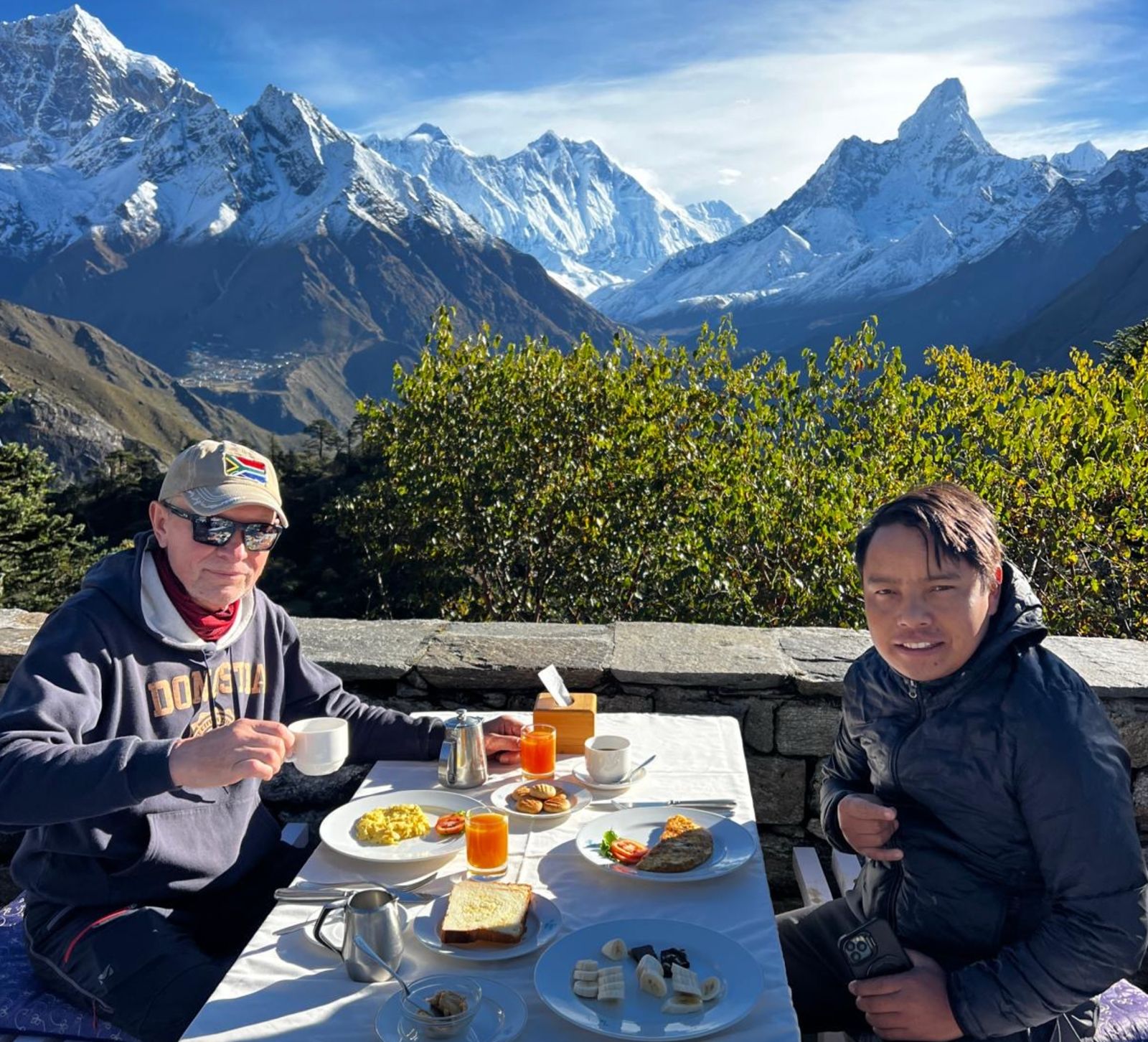
Save 34%
Luxury Everest View Trek
Overview of the Luxury Everest View Trek The Luxury Everest View...





